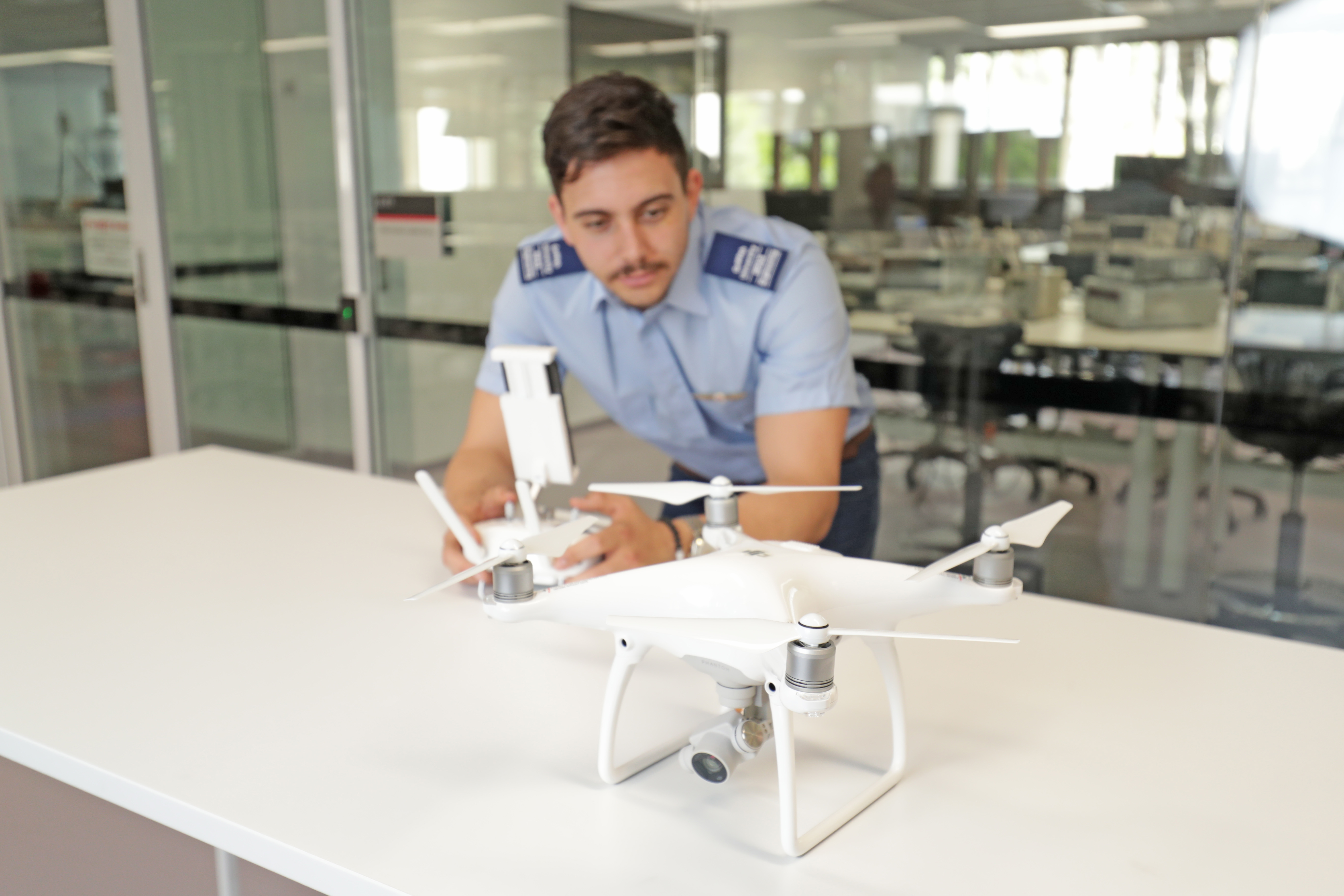Griffith University is further equipping students for jobs of the future with the introduction of a new Unmanned Aerial Vehicles major.
The major in Electronics and UAV will begin in the Griffith School of Engineering next year as part of the Bachelor of Engineering (Honours) degree program, giving students specialist knowledge in aviation and avionics as well as a CASA accredited pilot licence for UAV or drones.
It is among eight new innovative degree programs being offered by Griffith Sciences, including a world and Australian-first Bachelor of Engineering (Honours)/ Bachelor of Aviation combination.
Head of Electronic and Engineering at Griffith’s Nathan campus, Associate Professor Steven O’Keefe, said while some people still thought of drones as toys, the industry was becoming more advanced and now using Remotely Piloted Aircraft Systems terminology.
“You can certainly buy small aircraft, model planes for example, which are toys but the industry is using aircraft that are far beyond that, which have much greater capabilities and require licenced pilots to fly them,” he said.
“The industry is exploding in this area. Agriculture is using this technology a great deal, the mining industry, and we’re seeing medical supplies in remote parts of the world being delivered with this technology. The military of course uses this technology, so it’s getting bigger and the aircraft are getting bigger with more capabilities.”
Joining with Griffith Aviation, students will be required to wear uniforms when attending professional events, with study also taking them part of the way towards their manned private pilots licence.
With a little extra study, students can end up with a private pilot licence for manned aircraft and during their program will be trained so they can design remote aircraft from the ground up, equipping them with the skills to not only effectively build remotely piloted aircraft systems but fly them.

The School of Engineering is also running a drone pilot licence course in trimester three, an elective course for Bachelor of Aviation students.
The school will showcase the new program in an impressive UAV display for Open Day at the Nathan campus on Sunday, featuring a DJI Phantom 3, an experimental quadcopter and an industrial DJI Matrice 600 pro hexacopter (see more on these below).
While drones have to be flown in cages during public events, during their training students will use Nathan fields that are in controlled airspace. This means they will need to talk to the control tower and ensure CASA permissions are in place.
Bachelor of Electronics and Energy Engineering graduate Domagoj Leskarac, who is now doing his PhD in power and energy engineering, said in his field drones were being used to inspect high voltage power lines.
“It just gets people out of danger and gives you access to some other areas,” he said.
“Having a UAV licence or a drone licence is a very important skill in the future I think because it opens up the door for more opportunity.”
Visitors to Nathan on Open Day will also get to see how the popular fidget spinner gadgets are engineered and even take one home.
To register or find out more about what’s happening at Griffith University’s Gold Coast, Nathan and South Bank campuses visit the Open Day website.
More on our drones:
- DJI Phantom 3 – Just like an A380 captain learned to fly in a Cessna 150, the RPA pilots will begin their flight training in DJI Phantom 3 or 4 aircraft. Even though the Phantom 3 contains quite sophisticated GPS and stabilisation technology, is thought of as a craft suitable for trainee pilots to develop their flight skills.
- Experimental quadcopter – Built by one of our students and called the SABEL Spider, it was designed to collect water samples from different environments with minimal help from the pilot.
- DJI Matrice 600 pro – An industrial hexacopter with a large payload that can be used for missions where failure is not an option. It has triple redundant navigation and flight power and control systems and also has a retractable undercarriage. It would be used in environments where safety was critical and larger payloads were needed. It can carry the largest of cameras with ease or a host of monitors and sensor systems.
